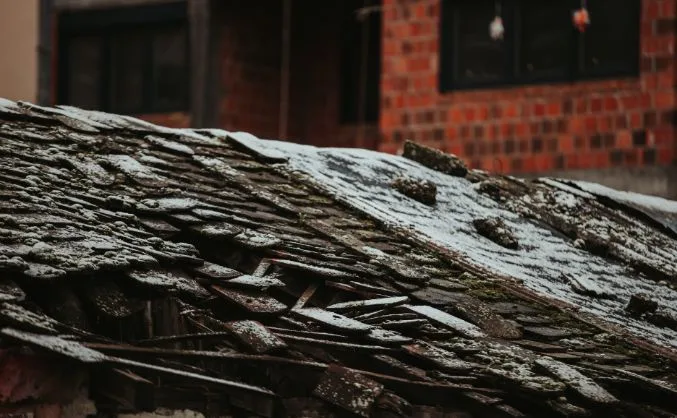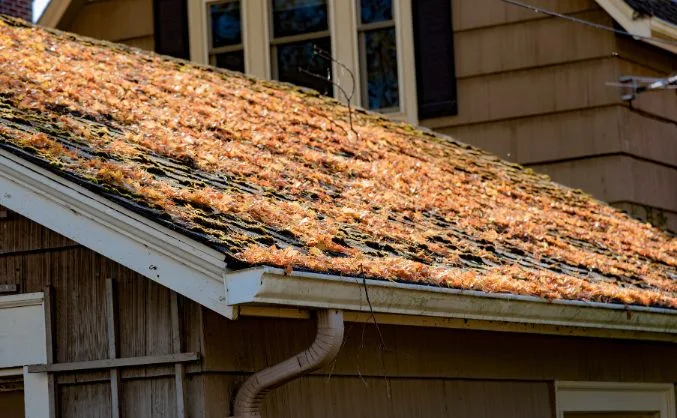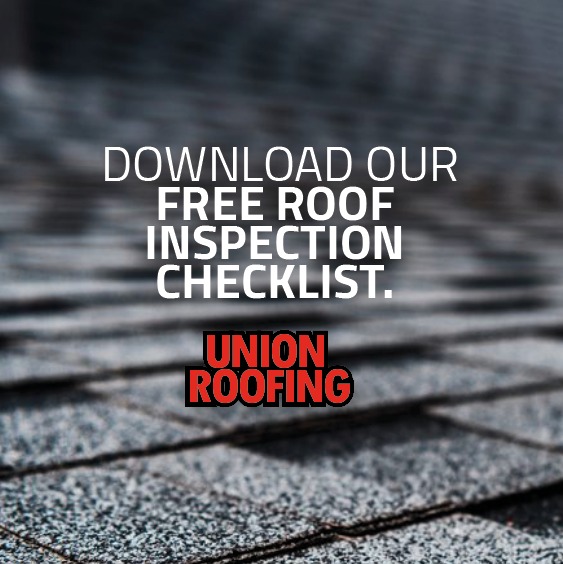
Winter can be a magical time of year, but for your roof, it can be a brutal one. Snow, ice dams, and strong winds can all take a toll on your roof’s integrity. If you have roof problems in winter, don’t delay.
This blog will break down the most common roof problems after winter. Keep reading, whether you are a homeowner or business owner.
Common Winter Roof Problems
Ice Dams and Leaks: The Winter Weather “Oh No!” Combo
Ice dams are ridges of built-up ice that form along the edge of your roof. Problems occur when warm air from your attic melts snow on the roof’s surface. Melted water then runs down the roof until it reaches the colder eaves (the overhanging edges). Here, it refreezes, forming a dam that prevents further melting water from draining properly.
The trapped water may back up under your shingles, seeping into your attic, leading to leaks and damage to your insulation, walls, and ceilings. This can be a costly problem, especially if left unaddressed.
Pro Tip: If you notice ridges of ice forming on your roof, it’s important to act quickly. You can attempt to remove them with a roof rake, but use caution to prevent damage to your shingles. Consider consulting a professional roofer for safe and effective ice dam removal.
Remember: Ice dams are a concern in areas with fluctuating winter temperatures, like Philadelphia, where thaws follow snowfalls. For more information on ice dams and how to prevent them, check out this National Roofing Contractors Association guide.
Winter Wind Woes: Shingle Damage and Lost Pieces
Strong winter winds can wreak havoc on your roof. High winds can lift and loosen shingles, exposing the underlayment (the waterproof layer beneath the shingles) to the elements. In extreme cases, winds can tear shingles completely off, leaving your roof vulnerable to leaks.
Address missing or damaged shingles promptly, as they signify a red flag. Left unrepaired, they can lead to leaks, water damage, and even structural problems.
Pro Tip: After a strong winter storm, take a walk around your property and do a visual inspection of your roof. Look for missing or damaged shingles, and check for any debris that may have blown onto your roof. If you see any concerns, contact a qualified roofer for a professional inspection.
Other Winter Roof Worries

Besides ice dams and wind damage, other potential winter roof problems include:
- Clogged Gutters and Downspouts: The causes of some winter roof leaks are easy to spot. For instance, heavy snowfall can clog your gutters with ice and debris. If not cleared, these clogged gutters can cause water to back up under your shingles and lead to leaks.
- Animal Infestation: Small animals like squirrels and raccoons may seek shelter in your attic during the winter. These uninvited guests can damage your roof vents, soffits (the underside of the roof overhang), and even chew through the roof itself.
FAQs about Winter Roof Problems
Should I get my roof inspected after winter?
Yes, it’s a good idea to have a qualified professional inspect your roof after winter. This is especially true if you live in an area with harsh winters. The roofer can identify any potential problems and recommend repairs to prevent future damage.
Can I fix minor roof damage myself?
For minor issues, such as a few loose shingles, you may be able to make repairs yourself. However, for more serious problems, it’s always best to call a professional roofer. They have the training and experience to safely and correctly repair your roof.
What are the issues with getting a new roof in the winter?
While it’s not ideal, you can have your roof replaced during the winter months. Here are a few challenges to consider:
- Cold temperatures: Some roofing materials, like asphalt shingles, can become brittle in cold weather, making them more prone to cracking during installation.
- Weather conditions: Snow, ice, and rain can make working on a roof unsafe for crews.
- Limited daylight: Shorter winter days can restrict the amount of time available for completing a roof replacement project.
However, a qualified roofing company will be able to advise you on the best course of action. If necessary, the roofer can work with you to schedule a roof replacement during more suitable weather conditions. A qualified roofer can advise you on the best course of action.
How much does it cost to repair winter roof damage?
The cost of repairing winter roof damage will vary depending on the severity of the damage and the size of your roof. Consult a reputable roofing company for a detailed quote.
How can I prevent winter roof damage?
To prevent winter roof damage, clean your gutters, remove snow buildup from your roof, and trim any tree branches that hang over your roof.
Don’t Let Roof Problems Put a Damper on Your Spring, Contact Union Roofing Today!
Winter can be tough on your roof, but by being proactive and aware of potential problems, you can avoid costly repairs down the road. If you suspect that winter weather has damaged your roof, don’t wait to address the issue. Early detection can prevent minor problems from turning into major headaches (and expenses!).
At Union Roofing, we have a team of experienced and certified roofers ready to help with your winter roof repairs. Let us inspect your roof for damage and recommend the best course of action for repairs, replacements, or restorations.
Contact Union Roofing today for a free quote. Our team is here to help you achieve the peace of mind you seek. We’ll ensure that your roof is ready to weather any storm, winter or otherwise.
